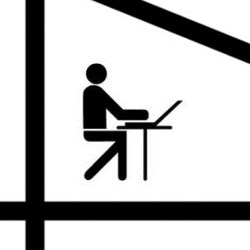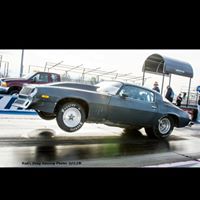Brian P Sutherland
age ~44
from Hampshire, IL
- Also known as:
-
- Brian Patrick Sutherland
- Brian Patric Sutherland
Brian Sutherland Phones & Addresses
- Hampshire, IL
- South Elgin, IL
- Elgin, IL
- Chicago, IL
- Kane, IL
Work
-
Company:Highland group inc
-
Address:200 S Michigan Ave # 1000, Chicago, IL 60604
-
Phones:3128637500
-
Position:Owner
-
Industries:Computer Programming Services
Resumes

Branch Manager/Executive Mlo At Southeast Mortgage
view sourcePosition:
Branch Manager/Executive MLO at Southeast Mortgage, Branch Manager/Executive MLO at Southeast Mortgage, Branch Manager at Citizens Fidelity Mortgage
Location:
Suwanee, Georgia
Industry:
Financial Services
Work:
Southeast Mortgage since Feb 2011
Branch Manager/Executive MLO
Citizens Fidelity Mortgage since 1998
Branch Manager
Branch Manager/Executive MLO
Citizens Fidelity Mortgage since 1998
Branch Manager

Martial Arts Instructor
view sourceLocation:
Boulder, Colorado
Industry:
Professional Training & Coaching

Data Warehousing Consultant
view sourcePosition:
Owner at Zeniquity LLC
Location:
Austin, Texas
Industry:
Computer & Network Security
Work:
Zeniquity LLC since 2004
Owner
Owner
Education:
The University of Texas at Austin 2013 - 2016
Bachelor of Science, Electrical and Computer Engineering
Bachelor of Science, Electrical and Computer Engineering
Languages:
English
Japanese
Japanese

Brian Sutherland
view sourceLocation:
United States

Brian Sutherland
view sourceLocation:
United States

Brian Sutherland South Elgin, IL
view sourceWork:
Career Education Corporation
2012 to 2000
Document Imaging Supervisor Imaging Associate/Senior Document Imaging Associate/Document Imaging Team Lead
2004 to 2012
2012 to 2000
Document Imaging Supervisor Imaging Associate/Senior Document Imaging Associate/Document Imaging Team Lead
2004 to 2012
Education:
Loyola University Chicago
Chicago, IL
2003
Bachelor of Arts in Communication
Chicago, IL
2003
Bachelor of Arts in Communication

Brian Sutherland Chicago, IL
view sourceWork:
World Kitchen, LLC
May 2010 to 2000
Contract Engineer Metso Minerals
Brookfield, WI
Jan 2008 to Oct 2009
Design Engineer Springs Window Fashions, LLC
Middleton, WI
Jul 2007 to Jan 2008
Intern University of Wisconsin Engineering Department
2006 to 2006
Student Volunteer
May 2010 to 2000
Contract Engineer Metso Minerals
Brookfield, WI
Jan 2008 to Oct 2009
Design Engineer Springs Window Fashions, LLC
Middleton, WI
Jul 2007 to Jan 2008
Intern University of Wisconsin Engineering Department
2006 to 2006
Student Volunteer
Education:
University of Illinois
Chicago, IL
Jan 2011 to Jan 2013
MS in Energy Engineering University of Wisconsin
Madison, WI
Jan 2002 to Jan 2007
BS in Mechanical Engineering
Chicago, IL
Jan 2011 to Jan 2013
MS in Energy Engineering University of Wisconsin
Madison, WI
Jan 2002 to Jan 2007
BS in Mechanical Engineering
License Records
Brian J. Sutherland
License #:
E097985 - Expired
Category:
Emergency medical services
Issued Date:
May 4, 2013
Expiration Date:
Oct 2, 2015
Type:
Orange County EMS Agency
Isbn (Books And Publications)

Glazes from Natural Sources: A Working Handbook for Potters
view sourceAuthor
Brian Sutherland
ISBN #
0713442042

Glazes from Natural Sources: A Working Handbook for Potters
view sourceAuthor
Brian Sutherland
ISBN #
0713647558

Glazes from Natural Sources: A Working Handbook For Potters
view sourceAuthor
Brian Sutherland
ISBN #
0812219457
Name / Title
Company / Classification
Phones & Addresses
Highland Solutions
Computers Hardware. Software & Services. Web Design. Internet Services. Computers - Networks. Computers - Disaster Recovery
Computers Hardware. Software & Services. Web Design. Internet Services. Computers - Networks. Computers - Disaster Recovery
200 S Michigan Ave #1000, Chicago, IL 60604
3128637500, 8153521078
3128637500, 8153521078
Owner
Highland Group Inc
Computer Programming Services
Computer Programming Services
200 S Michigan Ave # 1000, Chicago, IL 60604
Website: highlandsolutions.com
Website: highlandsolutions.com
Secretary, Owner
Highland Group, Inc
Management Consulting Services · Custom Computer Programming Svcs
Management Consulting Services · Custom Computer Programming Svcs
200 S Michigan Ave, Chicago, IL 60604
3128637500
3128637500
Highland Solutions
Computers Hardware · Software & Services · Web Design · Internet Services · Computers - Networks · Computers - Disaster Recovery
Computers Hardware · Software & Services · Web Design · Internet Services · Computers - Networks · Computers - Disaster Recovery
200 S Michigan Ave #1000, Chicago, IL 60604
3128637500, 8153521078
3128637500, 8153521078
President
Anchor Advisors, Ltd.
Management Consulting · Business Consulting Services
Management Consulting · Business Consulting Services
5366 N Elston Ave SUITE #203, Chicago, IL 60630
Chicago, IL 60630
7732827677, 7739304619
Chicago, IL 60630
7732827677, 7739304619
Principal
Decision Design Corp
Business Services
Business Services
342 Park Ave, Glencoe, IL 60022
Principal
Media Propulsion
Communication Services
Communication Services
200 S Michigan Ave, Chicago, IL 60604
Us Patents
-
Method For Surface Stabilized Combustion (Ssc) Of Gaseous Fuel/Oxidant Mixtures And A Burner Design Thereof
view source -
US Patent:20160230986, Aug 11, 2016
-
Filed:Feb 5, 2016
-
Appl. No.:15/016469
-
Inventors:Vladimir SHMELEV - Moscow, RU
Nikolay VASILIK - Moscow, RU
Mark KHINKIS - Morton Grove IL, US
Aleksandr KOZLOV - Buffalo Grove IL, US
David CYGAN - Villa Park IL, US
David KALENSKY - Chicago IL, US
Brian SUTHERLAND - Chicago IL, US -
International Classification:F23D 14/14
F23D 14/84
F23D 14/08 -
Abstract:Methods of burning combustible gas mixtures on a surface of a permeable matrix providing surface stabilized combustion (SSC) with increasing amounts of radiation energy emitted by the surface of the permeable matrix and decreasing concentrations of pollutant components in the combustion products are provided. The gas mixture is fed to a burner that includes a permeable matrix material having a first thermal conductivity. The gas mixture is preheated as it travels through the permeable matrix material. The gas mixture is then combusted at or near exit pores and channels formed at a combustion surface of the permeable matrix material, the combustion surface at least in part coated with a coating material having a thermal conductivity less than the permeable matrix material thermal conductivity and a high optical transmittance in the infrared spectrum.
-
Porous Metal Foam Burner
view source -
US Patent:20150253005, Sep 10, 2015
-
Filed:Mar 7, 2014
-
Appl. No.:14/200567
-
Inventors:Brian Sutherland - Chicago IL, US
Michael JOHNSON - Elmhurst IL, US
Chakravarthy SISHTLA - Plainfield IL, US -
International Classification:F23D 14/16
-
Abstract:A gas burner including a gas distribution element and a metal foam matrix burner covering the distribution element. A heat sink partially surrounds, and is spaced apart from, the metal foam matrix. The heat sink has an open end to vent exhaust emissions. The gas burner provides reduced nitrous oxide and carbon monoxide emissions and effective heat transfer modes (conduction, convection and radiation) compared to state-of-the-art burner technologies.
Plaxo

Brian Sutherland
view sourceElgin, ILImaging Team Lead at Career Education Corporation

brian sutherland
view sourceActor

Brian Sutherland
view sourceEAST COAST CAPITAL
Classmates

Brian Sutherland
view sourceSchools:
Plymouth Salem High School Canton MI 1995-1999
Community:
Michelle Campagna, Lynn Koza, Rachelle Carrier

Brian Sutherland
view sourceSchools:
Whitewood High School Whitewood VA 1989-1993
Community:
Lori Rainey, Jackie Breeden, Carol Goss, Roger Cantrell, David Mullins

Brian Sutherland
view sourceSchools:
Crocus Plains Regional High School Brandon Palestinian Territory, Occupie 1992-1996
Community:
Malcolm Wall

Brian Sutherland
view sourceSchools:
Salome High School Salome AZ 1981-1985
Community:
Kim Ramsey, Debbie Hines, Michael Whitlow, Jason Himelstein

Brian Sutherland
view sourceSchools:
Daniel Boone High School Gray TN 1983-1987
Community:
Sherri Spell, Kathryn Moore, Jason Carter, George Mauk

Brian Sutherland
view sourceSchools:
Martin Luther King Elementary School Edison NJ 1994-1998
Community:
Marcus Neyor, Kalena Reeves, Olivia Chen, Dua Amit, Janay Wright, Daniel Ivasco

Brian Sutherland
view sourceSchools:
Brampton Centennial High School Brampton Morocco 1993-1997
Community:
Carol Fagan

Brian Sutherland
view sourceSchools:
Banting Memorial High School Alliston Morocco 1965-1969
Community:
Melody Kozeyah, Mike Kenny, Raymond Graham, Deborah Bishop, Lana King, Cindy Little
Youtube
Brian Sutherland Demo 2018 COMEDY
Brian Sutherland Demo Reel 2017 [email protected]... Represented by:...
-
Duration:2m 54s
Myspace

Brian Sutherland
view sourceGoogleplus

Brian Sutherland
Work:
Magic Geek, Inc - President (1994)
Falcon Vision, LLC - Partner (2009)
Falcon Vision, LLC - Partner (2009)
Education:
Antioch College - Business, Santa Barbara City College - General Studies, University of California, Santa Barbara - Computer Programing

Brian Sutherland
Work:
Synchronoss Technologies, Inc. - Business Analyst (2004)
Education:
East Stroudsburg University of Pennsylvania - Computer Security, Allentown Business School - Computer Science

Brian Sutherland
Work:
Build-A-Bear Workshop - Bear Stuffer
Education:
School for Scoundrels - Being Bad :D
Tagline:
Really?

Brian Sutherland
Work:
Self employed - Consultant

Brian Sutherland
Work:
University of Toronto

Brian Sutherland
Work:
Mixed Nuts Media

Brian Sutherland

Brian Sutherland

Brian Sutherland
view sourceFriends:
Cory Flaherty, Ashley Jeanne Long, Joey Keck, Alex William Jones, Brian Sutherland. Photo Log in to contact Brian Sutherland.
Brian Sutherland. Photo Log in to contact Brian Sutherland.

Brian Sutherland Nc
view source
Brian A Sutherland
view source
Brian Sutherland
view source
Brian Sutherland
view source
Brian M. Sutherland
view source
Brian Sutherland
view source
Brian Sutherland
view sourceFlickr
Get Report for Brian P Sutherland from Hampshire, IL, age ~44

















